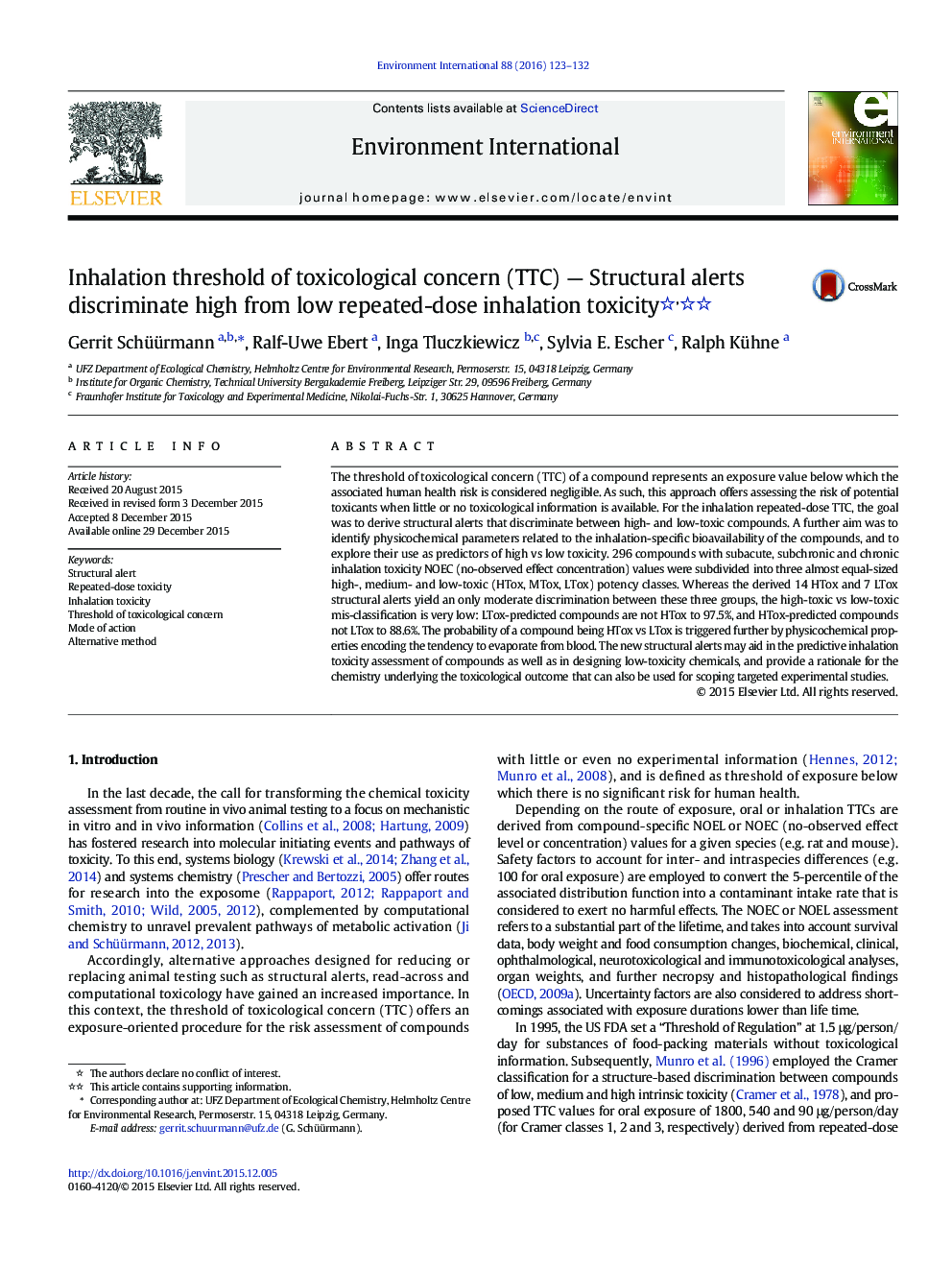| کد مقاله | کد نشریه | سال انتشار | مقاله انگلیسی | نسخه تمام متن |
|---|---|---|---|---|
| 6313365 | 1619040 | 2016 | 10 صفحه PDF | دانلود رایگان |

- Society calls for transforming chemical risk assessment to alternaÂtive (non-animal) apÂproaches
- So far there is still little scope for reÂplacÂing comÂplex long-term endpoints
- We present structural alerts to discriminate high- from low-toxic chemiÂcals regarding repeated-dose inhalation exposure
- The structural alerts provide a rationale for the chemistry underlying long-term toxicity
- The new in silico model may support regulatory risk asÂsessÂment, and the design of less harmful substances.
The threshold of toxicological concern (TTC) of a compound represents an exposure value below which the associated human health risk is considered negligible. As such, this approach offers assessing the risk of potential toxicants when little or no toxicological information is available. For the inhalation repeated-dose TTC, the goal was to derive structural alerts that discriminate between high- and low-toxic compounds. A further aim was to identify physicochemical parameters related to the inhalation-specific bioavailability of the compounds, and to explore their use as predictors of high vs low toxicity. 296 compounds with subacute, subchronic and chronic inhalation toxicity NOEC (no-observed effect concentration) values were subdivided into three almost equal-sized high-, medium- and low-toxic (HTox, MTox, LTox) potency classes. Whereas the derived 14 HTox and 7 LTox structural alerts yield an only moderate discrimination between these three groups, the high-toxic vs low-toxic mis-classification is very low: LTox-predicted compounds are not HTox to 97.5%, and HTox-predicted compounds not LTox to 88.6%. The probability of a compound being HTox vs LTox is triggered further by physicochemical properties encoding the tendency to evaporate from blood. The new structural alerts may aid in the predictive inhalation toxicity assessment of compounds as well as in designing low-toxicity chemicals, and provide a rationale for the chemistry underlying the toxicological outcome that can also be used for scoping targeted experimental studies.
Journal: Environment International - Volume 88, March 2016, Pages 123-132